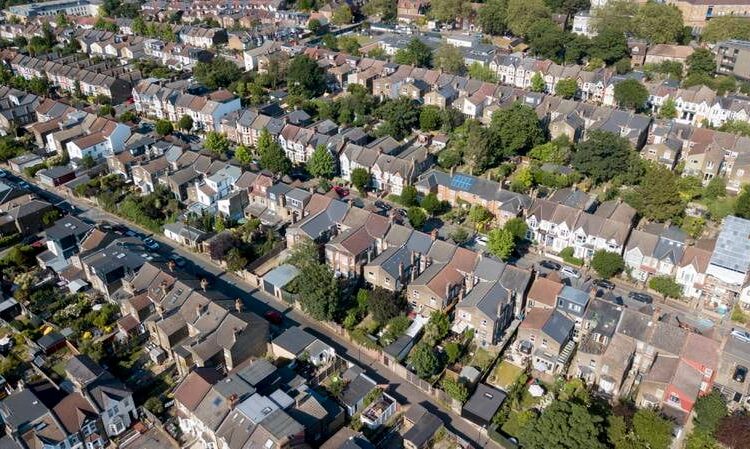
The weak recovery in UK house prices took a step backwards in November, according to the Halifax.
House prices rose 0.5 per cent between October and November, but at £283,615, the average British home was worth 1 per cent less than it was in November last year, the lender’s latest House Price Index found.
The monthly 0.5 per cent increase follows a 1.2 per cent rise between September and October.
Nonetheless, given all the economic headwinds, property prices have “held up better than expected”, according to Kim Kinnaird, director at Halifax Mortgages.
“The resilience seen in house prices during 2023 continues to be underpinned by a shortage of properties available, rather than any significant strengthening of buyer demand,” she said.
“That said, recent figures for mortgage approvals suggest a slight uptick in activity levels, which is likely as a result of an improving picture on affordability for homebuyers.
“With mortgage rates starting to ease slightly, this may be leading to increased buyer confidence, seeing people more inclined to push ahead with their home purchases.
“However, the economic conditions remain uncertain, making it hard to assess the extent to which market activity will be maintained.
“Other pressures – like inflation, the broader cost of living, overall employment rates and affordability – mean we expect to see downward pressure on house prices into next year.”
:quality(70)/cloudfront-eu-central-1.images.arcpublishing.com/thenational/7GQZX2OGD3TU23JC3KNWKTDJUY.jpg)
Regional variations
The South East was the worst performing region in the UK, with property prices 5.7 per cent lower than in November 2022. The average home in the region now costs £373,943, a drop of £22,702.
As usual, London retained the top spot for the highest average house price in Britain, even though they have fallen by 3.8 per cent over the past year. The average house price in the capital is now £524,592.
The Halifax found that Northern Ireland was the strongest performing UK region in November. There, house prices rose by 2.3 per cent on an annual basis, with the average home now costing £189,684 – £4,294 higher than at the same time last year.
In Scotland, house prices were largely flat over the year, while they fell by 1.5 per cent in Wales, where the average house cost £215,787 in November.
Interest rates
The figures point to a degree of stability returning to the UK market, but with the full effect of more than a dozen increases to interest rates by the Bank of England still to be felt, the light at the end of tunnel for house prices remains very dim.
“While the data offers hope that stability has returned to the property market, it may be the calm before the storm if house prices weaken over the course of next year as the drag effect from the Bank of England’s 14 interest rate hikes continues to filter through to the market,” said Alice Haine, personal finance analyst at Bestinvest.
“It means sellers may be forced to price their homes more competitively to secure a sale while mortgage rates are expected to ease further though remain high in line with the ‘higher for longer’ mantra for interest rates from the Bank of England.”
All eyes now turn to next week’s meeting of the rate-setting Monetary Policy Committee at the Bank of England, where interest rates are expected to stay on hold at 5.25 per cent.
“Prospective home buyers and residential buy-to-let investors seem to be continuing a cautious approach, with many putting on hold their plans, instead waiting to see what happens with mortgage rates in the longer term,” said Alan Davison, personal finance distribution director at Together.
“It will be interesting to find out what position the Bank of England takes when it makes its next interest rate decision at a meeting next week.
“Many will have their focus on the potential impact this may have on their property plans in the next 12 months.”
Updated: December 07, 2023, 9:52 AM
